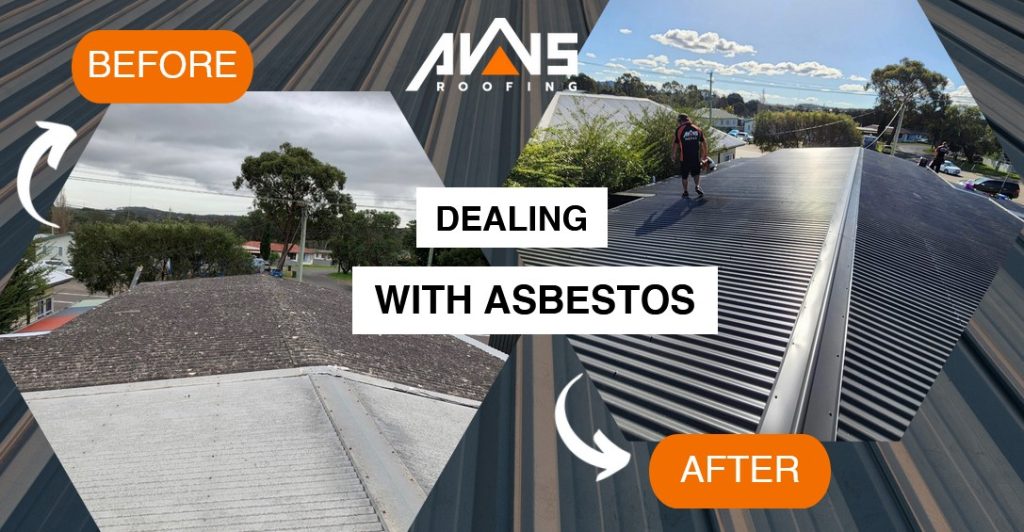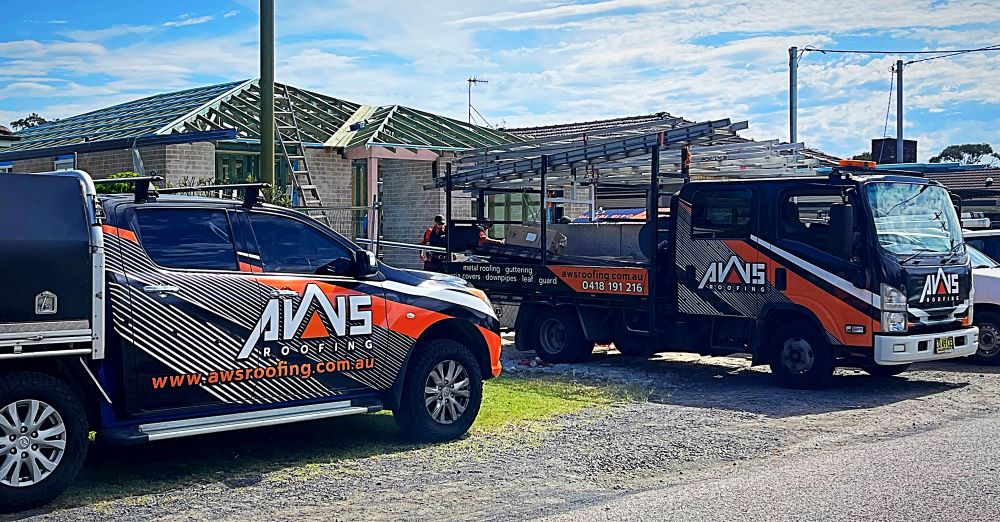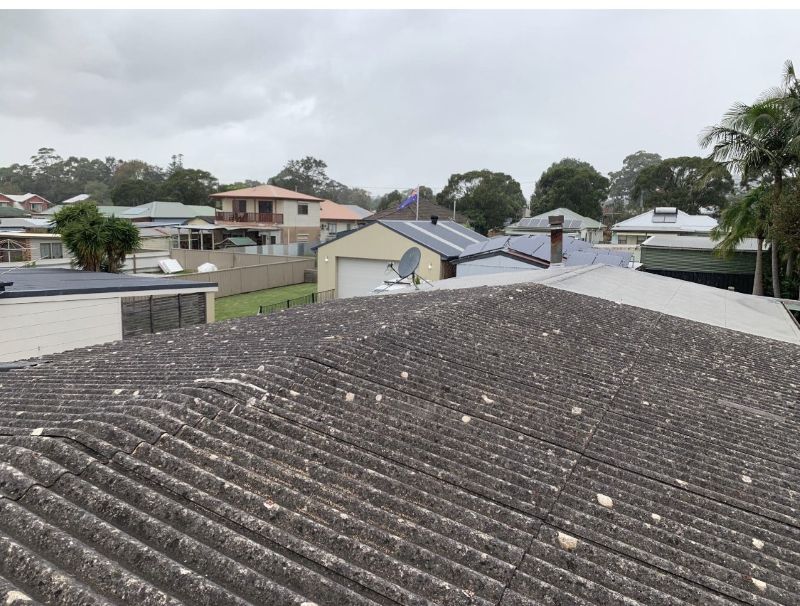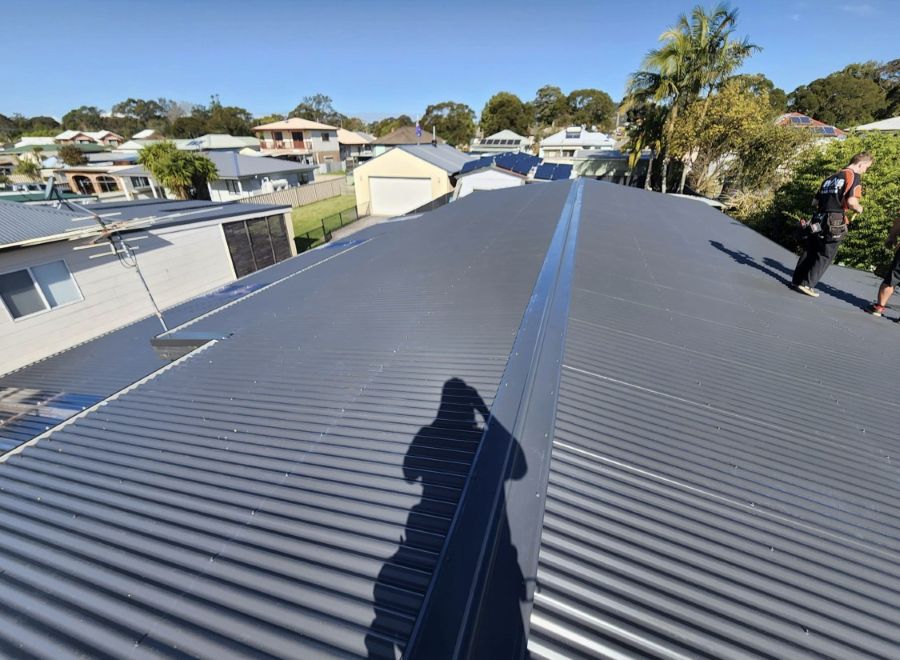The meticulous process of removing an asbestos roof is a highly specialised undertaking that demands rigorous adherence to NSW safety standards and licensed handling protocols. It is of utmost importance to ensure that comprehensive safety measures are diligently implemented to protect both the workers involved and the surrounding environment. This intricate and often hazardous task should only be entrusted to qualified professionals who have undergone extensive training in asbestos management and possess the requisite safety gear and operational protocols. By scrupulously following these stringent regulations, the risks associated with asbestos exposure can be considerably minimised, granting peace of mind to homeowners and businesses alike who are committed to prioritising health and safety in their environments.
At AWS Roofing, we leverage years of experience in the safe removal and replacement of asbestos roofing materials across the Central Coast region. Our expertise spans a diverse range of structures, from aging fibro homes to expansive commercial buildings, ensuring that we deliver exceptional service while maintaining an unwavering focus on safety and compliance. Our highly skilled team is well-acquainted with the complexities involved in the management of asbestos, and we are resolutely dedicated to providing a seamless experience for our clients, all while strictly adhering to the necessary regulations and guidelines mandated by local authorities.
Understanding the various elements that influence the final cost of asbestos roof removal is vital for effective financial planning. Several factors play a significant role in determining pricing, including the size of the roof, the materials required for replacement, and the specific conditions present at the job site. By equipping yourself with knowledge regarding these cost drivers, you can make more informed financial decisions and adequately prepare for the expenses associated with this essential home improvement project, ensuring that you are not taken aback by unexpected costs that may arise during the process.

Learn How to Effectively Identify and Assess Asbestos Roofs in Australia
- Examine the Installation Date of Your Roof to Identify Asbestos Risks
- If your residential or commercial property was constructed or roofed before 1990, particularly during the years 1945–1987, there is a significant likelihood that it contains asbestos cement sheeting or shingles. Identifying the installation date is a critical step in assessing potential asbestos risks and ensuring the safety of the occupants.
- Investigate for Brand Stamps or Codes to Confirm Material Type
- Asbestos sheets frequently bear embossed or printed codes, such as:
- “AC” (Asbestos Cement)
- “Super Six” (a widely used product containing asbestos until the mid-1980s)
- Older materials may display brand names like “James Hardie” accompanied by specific batch codes, which can help identify their composition.
- Asbestos sheets frequently bear embossed or printed codes, such as:
- Recognise Visual Characteristics of Asbestos Roofs to Assess Potential Danger
- Look for wavy corrugated sheets that resemble contemporary “Super Six” or “Custom Orb” profiles, which are common indicators of asbestos-containing materials.
- Identify flat grey sheets that feature small dimples or a grainy texture, as these characteristics may suggest the presence of asbestos.
- Older roofs may exhibit signs of weathering, such as moss growth or friable (crumbly) edges, which present additional hazards that must be addressed.
- Examine Roof Profile and Fixings to Ensure Proper Assessment and Safety
- Typically, asbestos sheets are secured with galvanised bolts featuring dome-shaped washers, which can be a telltale sign of their presence.
- Unlike modern Colorbond roofs, they often lack overlapping seams or the ribbed patterns commonly associated with metal roofing, making them easier to identify.
- Consider Location-Specific Indicators for Accurate Assessment in Central Coast NSW
- Many fibro homes situated in Gosford, Wyong, and Lake Macquarie that were constructed during the post-war boom era utilised asbestos products, highlighting the need for careful evaluation.
- In some instances, renovated roofs from the 90s may have newer coverings installed over the original asbestos sheeting, necessitating thorough inspection.
- Get Professional Testing for Absolute Confirmation of Asbestos Presence
- The only reliable method to confirm the presence of asbestos is through laboratory testing. At AWS Roofing, we collaborate with licensed asbestos assessors who take samples and send them for certified analysis, ensuring that your property is safe and compliant with local regulations regarding asbestos management.
Prioritise Safety by Avoiding Disturbing Suspected Asbestos Materials
It is imperative to refrain from cutting, drilling, sanding, or pressure washing any roofing materials that are suspected of containing asbestos. These actions can release dangerous fibres that are invisible to the naked eye, posing serious health risks and potentially leading to severe lung diseases upon exposure. Always prioritise safety by leaving any suspected materials undisturbed and contacting professionals for a thorough assessment and removal process that complies with all necessary health regulations.
.slider-3859.bafg-twentytwenty-container {
height: 500px !important;
}
.slider-3859.bafg-twentytwenty-container img {
height: 500px !important;
width: !important;
}
.slider-info-3859.bafg-slider-info .bafg-slider-title {
font-size: 22px;
}
.slider-info-3859.bafg-slider-info .bafg-slider-description {
}
.slider-info-3859.bafg-slider-info .bafg_slider_readmore_button {
text-align: center;
}
.slider-info-3859.bafg-slider-info .bafg_slider_readmore_button:hover {
}
.slider-3859 .twentytwenty-overlay:hover {
background-color: rgba(0, 0, 0, 0.5);
}
Key Factors Influencing the Overall Cost of Asbestos Roof Removal
The overall expense associated with the removal of asbestos from your roof is contingent upon several critical factors that must be carefully considered to prepare effectively for the project. These factors include:
- The type of roofing materials that will be required for replacement, impacting both cost and longevity.
- The total square metres of the affected roof area, which directly correlates to material needs and labour requirements.
- The pitch and overall complexity of the roof, which can affect the safety measures needed during removal.
- The property location, including local weather conditions and seasonal labour demands that may influence scheduling and costs.
- The condition of the asbestos itself and the requirements for its disposal, which can vary significantly.
- The amount of labour time and equipment necessary for the job, as these directly contribute to the overall expense.
- The accessibility of the roof and any site constraints that may complicate the removal process and increase costs.
- The number of rooftop fixtures, such as solar panels, antennas, or air conditioning units that may need to be addressed during the removal.
Each of these elements significantly contributes to the time, risks, and resources needed for the project, and it is important to note that no two jobs are identical. By understanding these factors, you can effectively plan and budget for the removal process while ensuring compliance with all safety regulations and maintaining the integrity of your property throughout the project.
1. Selecting the Right Roofing Materials for Effective and Cost-Efficient Replacement
The type of replacement material chosen after the removal of asbestos will have a considerable impact on the final cost of the project. For example, Colorbond® steel frequently emerges as a more cost-effective option compared to tile or slate alternatives, providing durability and aesthetic appeal. If your existing roof consisted of asbestos shingles or fibro sheets, AWS Roofing typically replaces these with durable and weatherproof Colorbond® profiles that are specifically designed to withstand the unique coastal conditions of NSW, ensuring longevity and reliability for years to come in your new roofing solution.
2. Assessing the Size of the Roof Area for Accurate Cost Estimation
As a general rule, the larger the area affected by asbestos, the greater the amount of material, disposal effort, and labour required for removal. Small residential roofs might still incur significant costs if asbestos is prevalent across a wide area, necessitating careful planning. Conversely, large industrial roofs could potentially benefit from economies of scale; however, they often necessitate additional safety measures and clearance protocols, which can also influence the overall cost structure and project timeline. Therefore, it is crucial to accurately assess the roof size to avoid unexpected financial burdens.
3. Evaluating Roof Pitch and Associated Safety Risks for Effective Project Planning
- A steeper pitch (12:12 or higher) poses increased safety risks and can lead to greater material usage during the removal process, escalating costs significantly.
- Low-pitched roofs (6:12 or lower) are generally quicker and safer to work on, which may result in reduced costs and a more streamlined removal process, making them preferable for asbestos removal.
4. Understanding the Impact of Location, Weather, and Seasonal Delays on Cost
- Intense summer heat and storm seasons can raise labour costs due to weather delays and the necessity for additional safety measures during removal operations, impacting your overall budget.
- The Central Coast climate, characterised by high humidity and exposure to salt-laden air, can expose hidden roof damage during the removal process, potentially increasing both time and costs associated with the project.
5. Condition of Asbestos and Required Disposal Protocols
- If the asbestos is fragile or crumbling (friable), it necessitates stricter containment procedures, which in turn raises safety protocols and disposal costs significantly.
- All asbestos removed by AWS Roofing is transported to a licensed NSW EPA-approved disposal facility, ensuring compliance with legal requirements and safety standards while protecting the community from potential hazards.
6. Labour Time and Equipment Needs for Safe and Compliant Removal
- More intricate jobs featuring poor site access may necessitate the use of scaffolding, cranes, or harnessed teams, all of which can contribute to increased costs and extended project timelines.
- Our team is fully licensed and trained in accordance with SafeWork NSW regulations, ensuring that all asbestos removal is conducted safely and without compromise to safety or quality, prioritising the wellbeing of everyone involved.
7. Addressing Fixtures and Site Access Challenges for Efficient Removal
- Items such as solar panels, satellite dishes, air conditioning units, or antennas must be safely disconnected, stored, and reinstalled after the asbestos removal process is complete to ensure functionality and safety.
- In certain situations, specialist electricians or rigging gear may be necessary, impacting both timelines and pricing due to the additional complexity involved in the project.
- Restricted access to the site or challenging driveways can escalate delivery and equipment costs, further influencing the overall project budget and timeline, necessitating careful consideration during planning.
Insurance Coverage for Asbestos Roof Replacement: Understanding Your Eligibility and Options
Various insurance policies may cover the costs associated with asbestos roof replacement resulting from storm damage; however, it is essential to note that exclusions may apply depending on the policy specifics. To navigate the insurance landscape effectively, consider the following steps:
Essential Steps to Follow for Successful Insurance Claims on Asbestos Roof Damage
- Document Damage Thoroughly – Take clear photos and video evidence of any roof leaks or significant damage that may be related to asbestos exposure or disturbance, as this documentation will be crucial for your claim.
- Contact Your Insurer Promptly – Reach out to your insurance provider immediately to report your claim and discuss your coverage in relation to asbestos removal, ensuring a streamlined process.
- Avoid Permanent Repairs Until Approved – Do not proceed with permanent work before obtaining approval from your insurer; however, temporary tarps are permitted and strongly advised to prevent further damage while awaiting assessment.
- Emergency Assistance Contacts – In urgent situations, contact the NSW SES on 132 500 for immediate roof tarping assistance in the Central Coast area to mitigate any further damage effectively.

Obtain a Tailored Professional Quote from AWS Roofing Today for Your Asbestos Roof Replacement
Recognising that each asbestos roof is unique, we ensure that we do not provide quotes indiscriminately. At AWS Roofing, we offer site-specific quotes that include a thorough assessment of the asbestos risk onsite, along with expert advice on the best replacement materials that comply with NSW standards. Our unwavering commitment to safety and quality is paramount in every project we undertake, ensuring customer satisfaction through our meticulous approach.
To learn more about a recent asbestos roof replacement that our team successfully completed, please feel free to reach out for more information regarding our services.
If you reside in Gosford, Wyong, Belmont, or anywhere across the Central Coast, do not hesitate to contact us for a professional and compliant asbestos roof removal and new metal roof replacement quote today. We are here to assist you every step of the way, ensuring a smooth and safe transition to a new roofing solution that meets your needs.
The Article: Roof Asbestos Removal Costs in Central Coast NSW first appeared on https://writebuff.com
The Article Roof Asbestos Removal Costs in Central Coast, NSW Explained Was Found On https://limitsofstrategy.com


